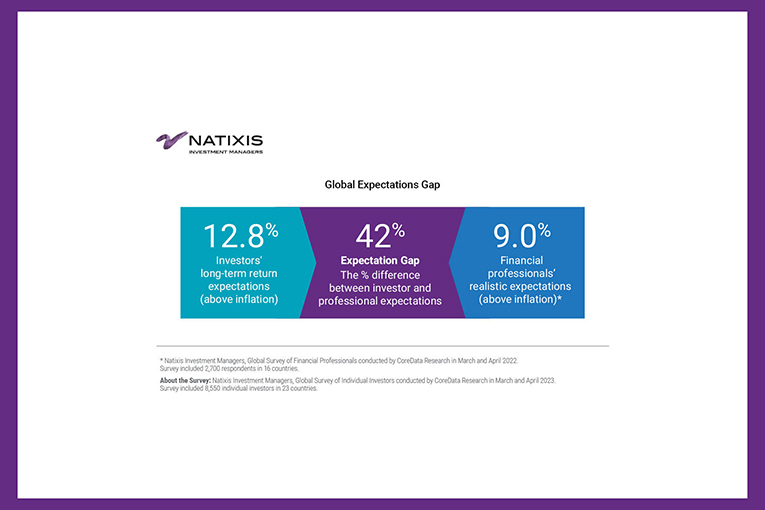Growth Opportunities: Insights from the Natixis IM 2022 Survey. In the ever-evolving landscape of financial advisory services, advisors are perpetually seeking avenues for growth and opportunities to increase assets under management (AUM). According to the Natixis Investment Managers (IM) 2022 Survey of Financial Professionals, advisors have set their sights on a median growth target of 5% for client AUM this year. However, the prevailing sentiment suggests that market performance alone won’t be the driving force behind this growth. Instead, advisors are leaning heavily on acquiring new assets from new clients to fuel their business expansion.
The Natixis IM survey offers an intriguing glimpse into the strategies, challenges, and adaptations of financial advisors in a changing market. The survey encompassed 150 financial advisors in Canada, forming part of a broader global survey involving 2,700 financial professionals. In this article, we explore these insights to understand how advisors are navigating the financial services landscape and aiming for a median annualized growth rate in AUM of 15% over the next three years, with a goal of attracting ten new clients annually.
Transitioning from Market-Driven Growth
The past decade witnessed impressive asset growth, primarily fueled by a bull market that delivered double-digit returns. However, financial advisors have grown increasingly cognizant of the unlikelihood of sustaining such returns over the long term. Instead, they are shifting their focus towards tapping into the vast pool of assets in motion. This includes retirement asset rollovers and the transfer of significant generational wealth.
Advisors’ pursuit of these ambitious growth targets may necessitate a shift in business practices and assumptions. Let’s delve deeper into the key findings of the survey:
- Client Acquisition Challenges: The survey revealed that client acquisition is perceived as the most formidable challenge to business growth. When asked about the most challenging aspect of their growth strategy, advisors were twice as likely to cite “winning new assets from new clients” (45%) compared to “gaining more assets from existing clients” (20%). An additional 29% expressed concerns about retaining their existing client base.
- Focus on Next-Generation Heirs: Establishing relationships with the next generation of clients, the heirs of current clients, is deemed critical by 65% of advisors. These heirs represent an essential factor for the continued growth of advisory businesses. However, half of the surveyed advisors (50%) find it challenging to make progress in this area due to the significant time investment required.
- Value Beyond Portfolio Construction: Advisors acknowledge the importance of delivering value beyond portfolio construction (59%). Yet, 42% find this aspect challenging because of the time and effort needed to provide a broader range of advisory services.
David Giunta, President, and CEO for the U.S. at Natixis Investment Managers, underscores the imperative for advisors to expand their capacity while meeting the evolving needs of clients. Advisory relationships are no longer limited to transactions within investment portfolios; instead, they are defined by a deeper understanding of client’s financial goals and the value-added services that advisors can provide. Technological advancements and innovative product offerings are pivotal in enabling advisors to deliver a holistic financial planning experience.
Model Portfolios: A Strategic Approach
To enhance their capacity for financial planning, advisors are increasingly leveraging model portfolios on the investment side. On average, a substantial 84% of client assets under management are allocated to model portfolios. This allocation encompasses various components:
- Models Constructed by Advisors: Advisors allocate 47% of assets to models they construct themselves, reflecting their unique insights and strategies.
- Models Managed by Their Firms: 29% of assets are allocated to models built and managed by their respective firms.
- Third-Party Asset Managers: Advisors entrust 23% of assets to third-party asset managers, leveraging their expertise and offerings.
Interestingly, clients whose assets are in model portfolios place the highest value on financial planning services (83%), followed by tax management (60%), financial education and engagement with family members (51%), and trust and estate planning services (50%).
Client Prospecting and Targeting
In the quest for new clients, advisors employ diverse strategies. A notable approach is considering the life stages of prospects, with 77% taking this factor into account. The breakdown of this strategy reveals specific priorities:
- Pre-Retirees: Nearly all advisors (98%) prioritize pre-retirees, individuals aged between 50 and 60. This group represents a significant focus due to their proximity to retirement and wealth management needs.
- Retirees: 64% of advisors focus on individuals who are at or just entering retirement, recognizing their unique financial planning requirements.
- Older Accumulators: Advisors target older accumulators, those aged 35 to 50, who are in their peak earning years and have diverse financial goals such as saving for retirement, funding education, and managing debt.
However, amidst these targeted strategies, there are noteworthy opportunities advisors might be overlooking:
- Post-Retirees: Only 33% of advisors concentrate on post-retirees, who are in the phase of drawing down assets and require robust financial planning.
- Younger Clients: Just 34% place a high priority on clients aged 18 to 35, representing Generations Y and Z, which are among the fastest-growing segments of Canada’s population.
Tailoring Services for Specific Segments
Beyond age segmentation, advisors are tailoring their services and business development strategies to cater to specific high-value client groups. When asked about the segments they prioritize for client acquisition and retention, the survey highlights some intriguing insights. It suggests that advisors may be overlooking opportunities to meet the distinct needs of certain segments, including women and the LGBTQ+ community. Moreover, relatively few advisors are specifically targeting next-generation heirs, despite their critical role in the long-term success of advisory businesses.
The survey findings indicate that:
- Professionals: 83% of advisors prioritize professionals such as lawyers, doctors, and corporate executives.
- Business Owners: Nearly as many (75%) focus on business owners, recognizing their unique financial planning requirements.
- High Earners, Not Rich Yet (HENRYs): 75% target HENRYs, individuals with high earning potential who may not yet have accumulated significant wealth.
- Next-Generation Heirs: Only 35% are actively concentrating on the next generation of heirs, despite their paramount importance for the sustained growth of advisory practices.
- Women: A mere 29% of advisors are specifically addressing the financial needs of women, who constitute a significant and influential client base.
- LGBTQ+ Community: Just 4% of advisors are focused on the LGBTQ+ community, despite their unique financial planning considerations.
The insights from the Natixis IM 2022 Survey provide a comprehensive understanding of how financial advisors are navigating the evolving financial services landscape. These findings emphasize the challenges of client acquisition, the significance of engaging with the next generation, and the importance of delivering value beyond portfolio management.
As the financial advisory landscape continues to evolve, advisors’ abilities to offer comprehensive financial planning, leverage innovative investment strategies, and effectively prospect clients across various life stages and demographics will be pivotal for long-term success. Understanding clients’ evolving needs, embracing model portfolios, and crafting tailored strategies for specific high-value client segments will be instrumental in achieving growth targets




